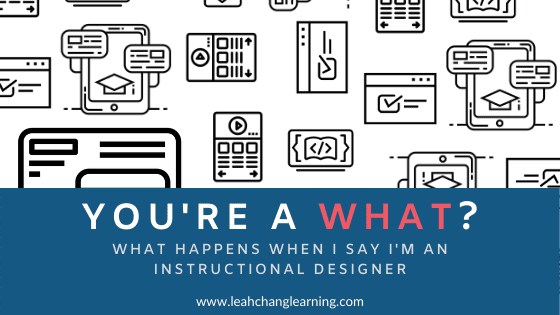Make learning stick. This mantra guides my work behind the scenes and inspires me throughout my workday, which is why it’s the first thing you see on my homepage.
Sticky learning or “stickiness” refers to how the brain learns and retains information. To create learning that sticks—content that learners remember after the training or course is over—means activating the brain for long-term retention and designing learning based on cognitive and neuroscience.
Researchers and companies alike agree that “stickiness” is something we all want to achieve. Why? Because sticky learning means learners will:
- Remember what they’ve learned: they created neural pathway connections they’ll be able to revisit later. Learning will have a lasting impact.
- Recognize value in the learning experience. They made an emotional connection with the topic and recognize how the training’s value proposition applies to their work performance.
- ‘Get it’ – they practiced what they learned, and will begin using their new skills and knowledge on the job right away.
Here are some of the ways I design sticky learning. (This is definitely not an exhaustive list!)
1. Address motivations or gaps with pre-training
Laying the ground-work to make learning effective is just as important as creating a launch and promotional plan for a new product. You need to prepare your audience to embrace something new. Learning consultants who leverage change management strategies are the most successful at this: By building a pre-training plan, the learners are primed and ready for the learning ahead.
Using a comprehensive communications plan that incorporates a marketer’s approach to promotions and change management is one way to do this. Generating awareness and curiosity before training can be an effective way to prepare your audience even before the learning or course has launched.
Previews, sneak peaks, announcements, and communications informing learners of what to expect and what others are saying are the best way to prime the brain to retain new information. We’re social creatures, after all, and if others are doing something and talking about it, we get curious about it.
My favourite way to create ‘buzz’ about a course is to use testimonials from test users (i.e. peers or colleagues) to generate curiosity and openness. There are many other ways that you can create this effect, using what educators call “affective learning” (i.e., learning that considers feelings, emotions, attitudes, things that are much harder to measure or shift, but are essential to how a learner approaches and is receptive to learning and long-term memory).
2. Reinforce over time
Our brains learn best over time, and with practice. To learn to do something differently or to learn new ways of doing things, we need time to practice. Sticky learning builds in the necessary spacing, practice, and reinforcement over time that adult learners need to build cognition, while balancing business needs for effectivity and cost-benefit resources.
You can still achieve these things with eLearning, blended learning and of course, classroom learning. An experienced ID will build these in wherever possible.
Learning something new is hard work—it’s not a one-time deal. Our brains need repetition and spacing to build strong connections and neural pathways, which is why learning something new isn’t easy. Sometimes IDs make learners ‘work’ for it, because it’s stickier. A good example of a type of sticky learning delivery is microlearning: learning in short bursts over time (usually via short videos or other bite-sized media). Microlearning can be very powerful because the content is chunked, spaced, and reinforced over time. The brain gets boosted and has a chance to recall and build upon the learnings. (Just remember: With microlearning you’ll need a good monitoring and data analytics strategy to track all the ways learners engage with your content if you’re delivering it outside of your LMS.)
3. Reset the forgetting curve (post training)
Although most organizations skip this step, it’s what really helps your training stick. Learning continues after learners have completed the course, attended the session, or engaged in your learning activities!
Humans naturally forget more than 70% of what they learned within 24 hours. Transferring only the MOST IMPORTANT information and skills from short to long-term memory is one of the many ways that humans survived. This means that sticky learning needs to reset the brain’s natural forgetting curve after training, to help retain what was learned in long-term memory. You can do this with memory boosts—short quizzes or cognitive ‘nudges’ that strengthen the new connections in the brain.
What you do after training is just important as the training itself. How your organization keeps the conversation going is important, whether it’s via informal team discussions, or more formal follow-up questions pushed out to learners at 24, 42, 78-hour intervals after the event. A learning technologist can work with you to find creative solutions that reinforce training.
4. Utilize social learning
We learn by engaging and interacting with others and with the content we’re learning. Our brains are wired to keep us ‘in the tribe’- using social learning on your intranet or internal chat feeds, leaderboards, intranet forums or virtual comment boards is a powerful way to keep learners accountable, engaging with the content, asking questions, and leveraging the learning of others to continue strengthening those neural pathways. This is why many good Learning Management Systems offer social learning functionality, or why a good learning technologist can work with you to integrate your learning delivery platform with other social platforms your company is already using.
Knowledge bases and forums are useful online tools that organizations can use to support social learning, but you can also do it in person through internal communications, social committee events, or town-hall events. Many proactive learning and development teams partner with Communications or Human Resources because they know the value of social connections to reinforce corporate culture and consistency.
Many organizations aren’t leveraging the power of social learning. If you have a communications team, intranet, social committee or other group/interface, use it! Leverage that to support your courses and give learners an opportunity to engage, discuss, and share their insights (and even their dislikes) of a course.
If you want to learn more about designing sticky learning, there are lots of great resources available. Contact me for a list of my favourite resources, or better yet, get in touch to discuss how I can help make your learning stickier!
References:
Kohn, Art. “Brain Science: Overcoming the Forgetting Curve.” Learning Solutions Magazine, 10 Apr. 2014, www.learningsolutionsmag.com/articles/1400/brain-science-overcoming-the-forgetting-curve.


